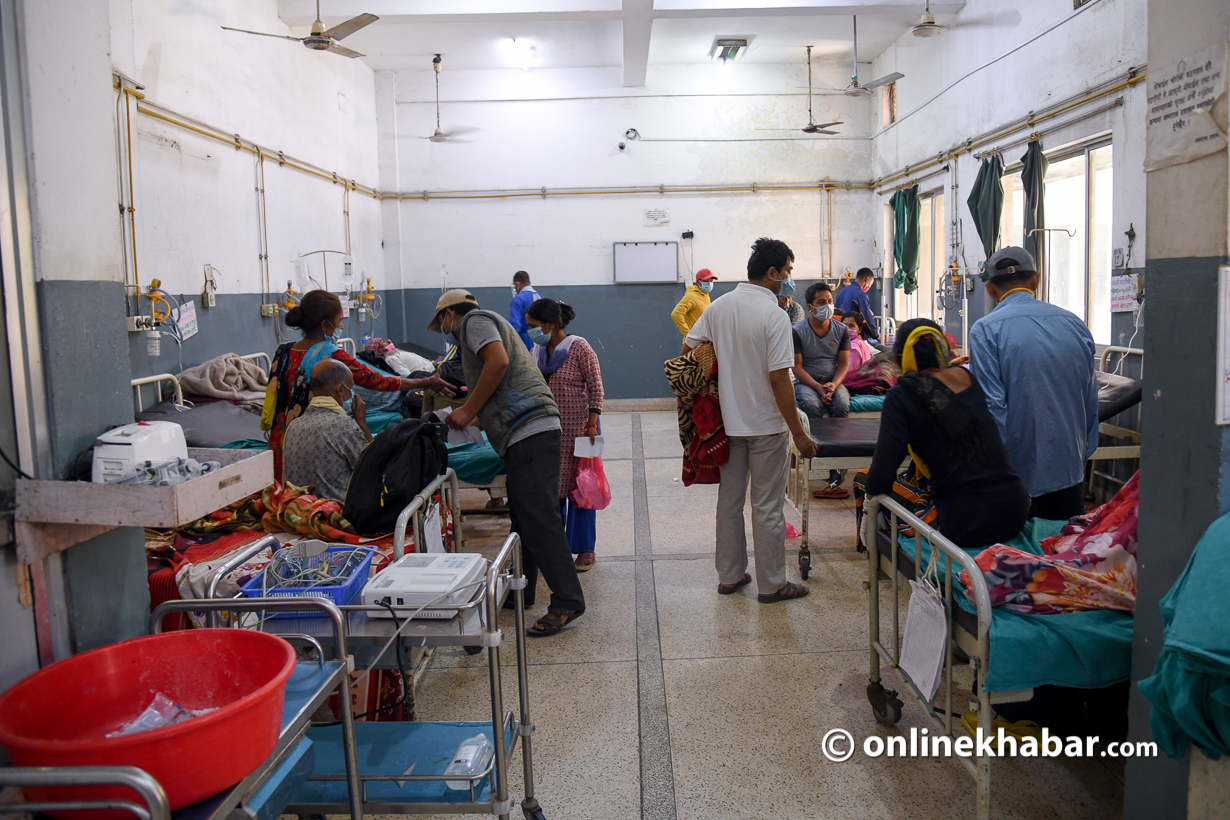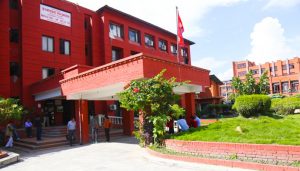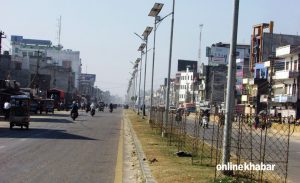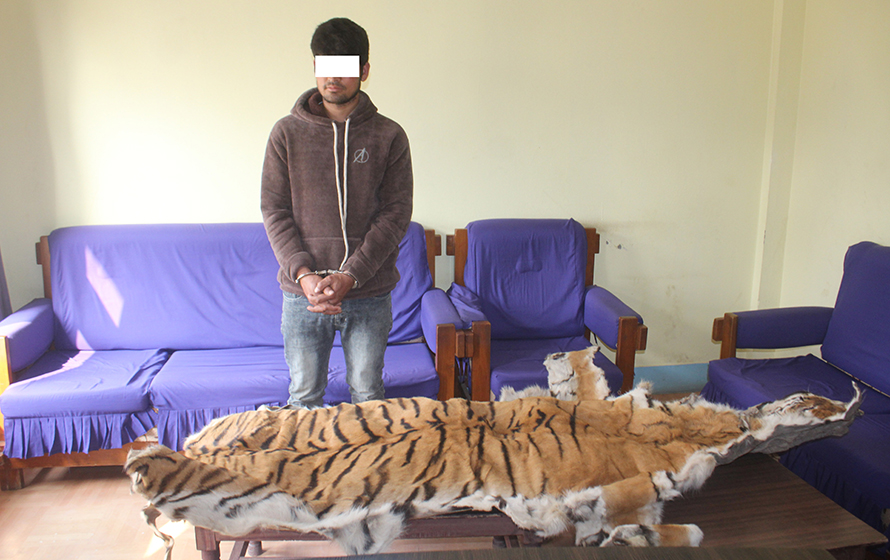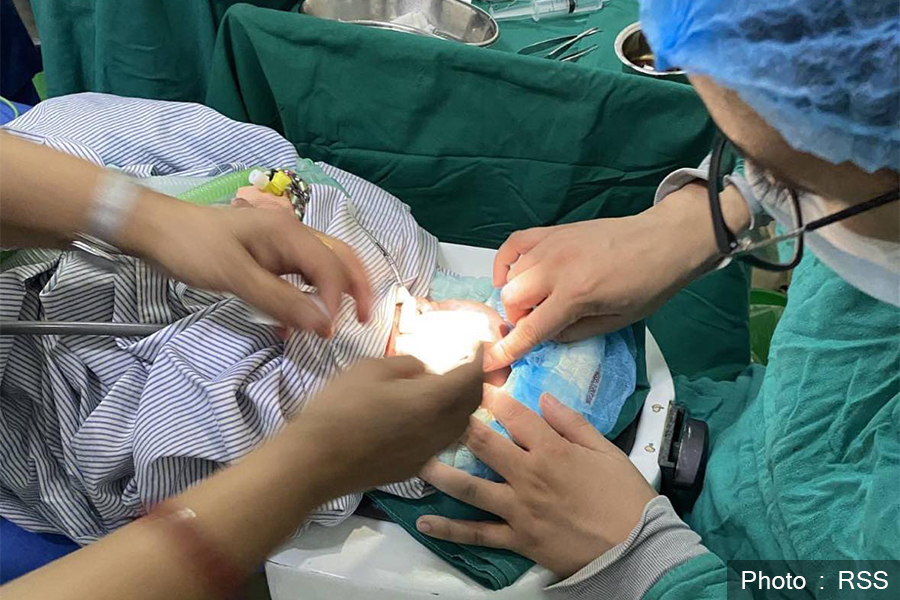The scenes around Nepalgunj Medical College Teaching Hospital in Kohalpur are depressing. A body covered in white clothes lies in front of the hospital building as doctors, nurses and other hospital staff are seen working tirelessly to ensure that no other patient at the hospital faces a similar fate.
The emergency department of the hospital is full of Covid-19 patients as additional people, including those on oxygen support, are suffering. The ICU is almost full as the numbers of people wanting to be admitted due to the coronavirus infection continues to rise. It is safe to say that the situation is most likely to get worse with time.
The lack of beds
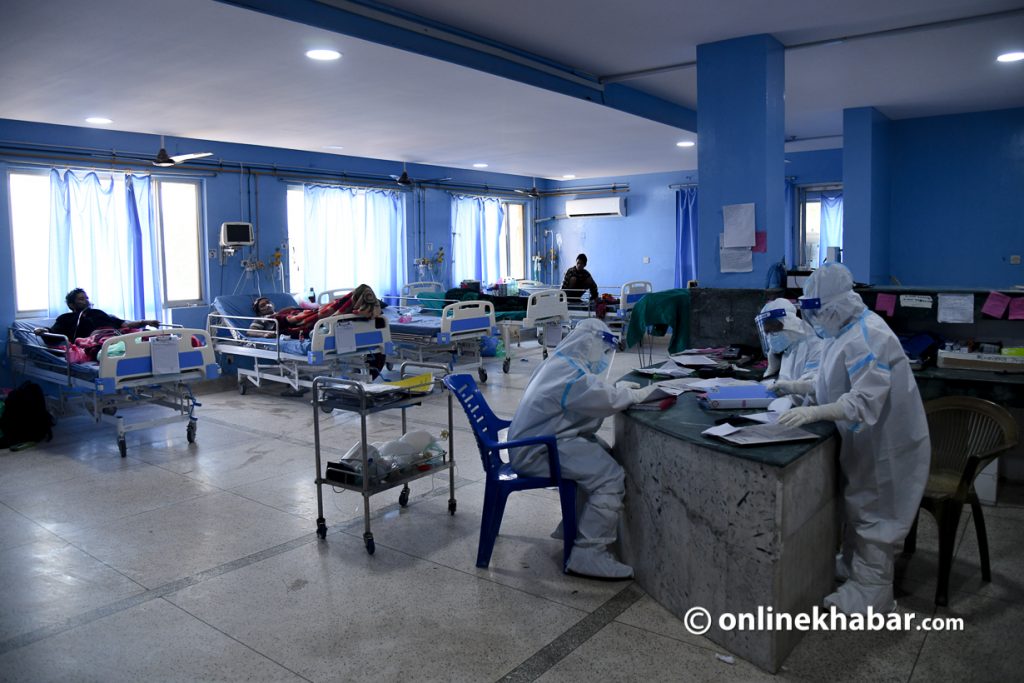
“We’re still awaiting PCR reports of the people who have been admitted here. But, we are almost sure that all of them have contracted Covid-19,” says Dr Devendra Acharya.
Dr Acharya’s phone rings constantly all day as people enquire about the availability of beds in the ICU. “There are no beds available,” he is heard speaking on the phone. “But if the person needs oxygen, please bring him/her. We will manage space.”
The emergency department of the hospital is in a sorry state as the number of patients continues to go up. Not wanting to let them die due to the unavailability of beds, the doctors are still taking admission and putting them on oxygen support.
“If the number continues to rise, we can’t expect to keep admitting people. The hospital can only do so much,” says Dr Acharaya.
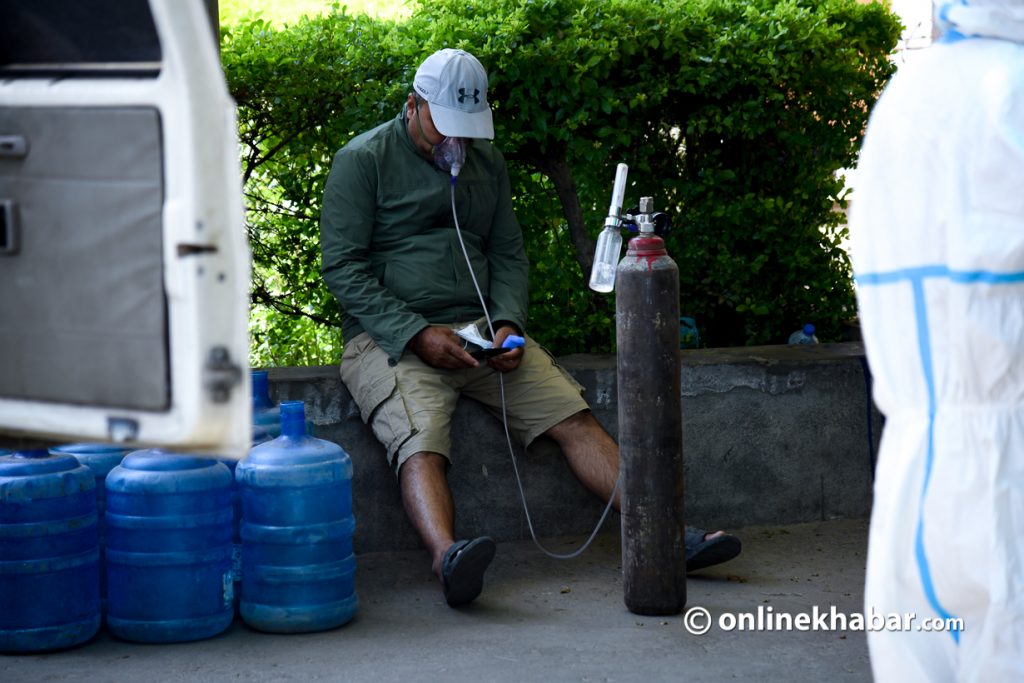
Nepalgunj Medical College, in order to cater to Covid-19 patients, had set aside 60 beds in a high-dependency unit (HDU). These beds have been full since April 14. This is not the only hospital that lacks beds; Bheri Hospital, which has the capacity to cater to 142 Covid-19 patients, currently has over 200.
The struggle to breathe
With the beds occupied, new patients suffering from Covid-19 are having a tough time. Most are seen outside the hospital struggling to breathe.
“No one had imaging that we’d be seeing such a situation,” says Dr Acharya. “Most of us want to give up because we don’t have the resources to handle this.”
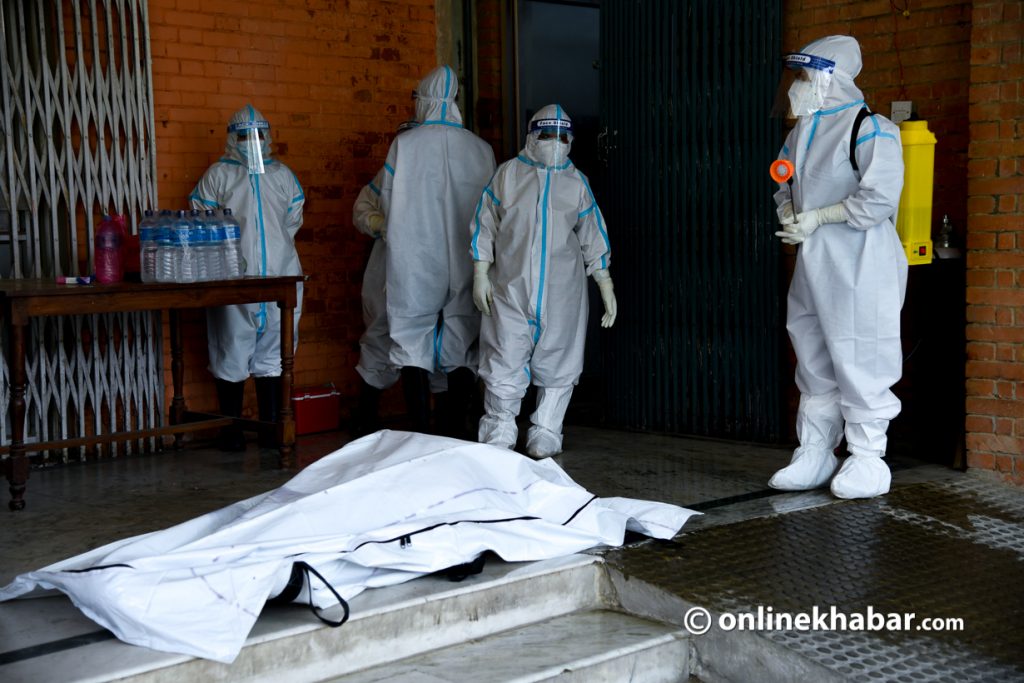
As one moves from the emergency ward to the ICU, the situation is even frightening. The ICU is full as almost everyone is critical. The sound of the monitors reverberates around the room. A Covid-19 patient walks to the nursing station and sits beside a nurse. As the nurse asks him to go sit in his bed, he refuses to do so.
“A person has just died beside me. I can’t go there,” he replies.
Out of control
Outside the ICU, things make it clear that the situation is getting out of control. An ambulance arrives with a Covid-19 patient who is critical and on oxygen support. The person who just died has been brought out to make room for the critical patient. In 40 minutes, the people from the hospital’s mortuary take the body out from the ICU as another group disinfects the bed.
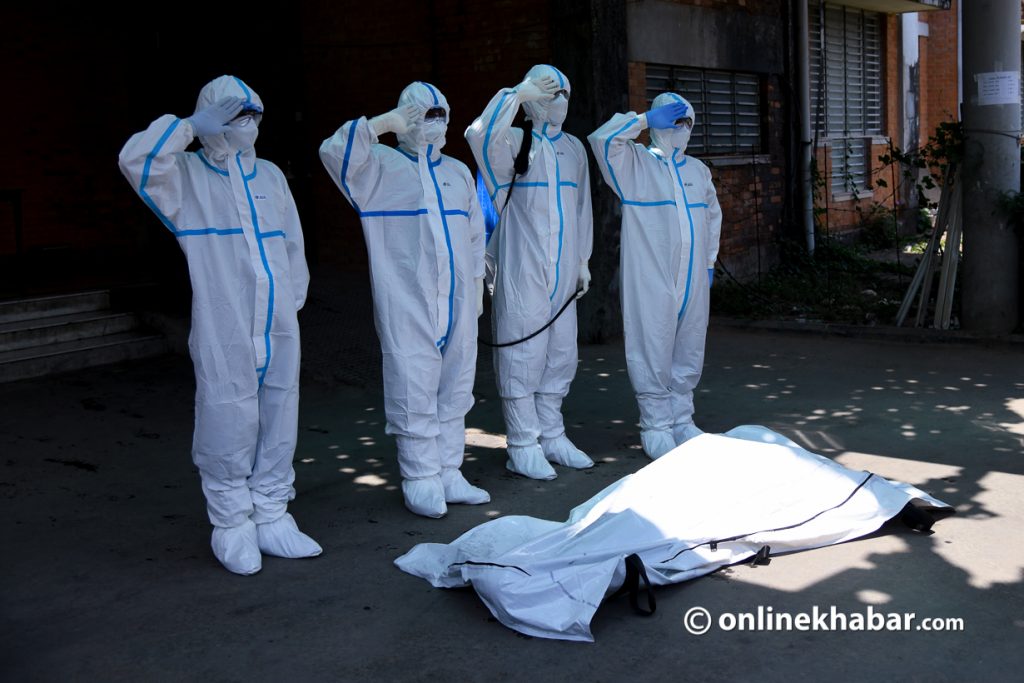
In another 40 minutes, a team from the Nepal Army arrives and takes the body away from the hospital.
The college’s assistant professor Dr Shyam BK says that doctors, nurses and other health workers in the hospital feel hopeless and helpless.
“Every day, we see people dying due to the virus and we can’t do anything,” says BK. “Listening to the cry of people in the ICU, everyone in the hospital has become traumatised. How long can this go?”
Dr Acharya says that thinking about what will happen in the future scares him and his fellow colleagues. He fears that if this carries on, a lot more people will die due to the virus.
“We won’t be able to save people,” says Dr Acharya.
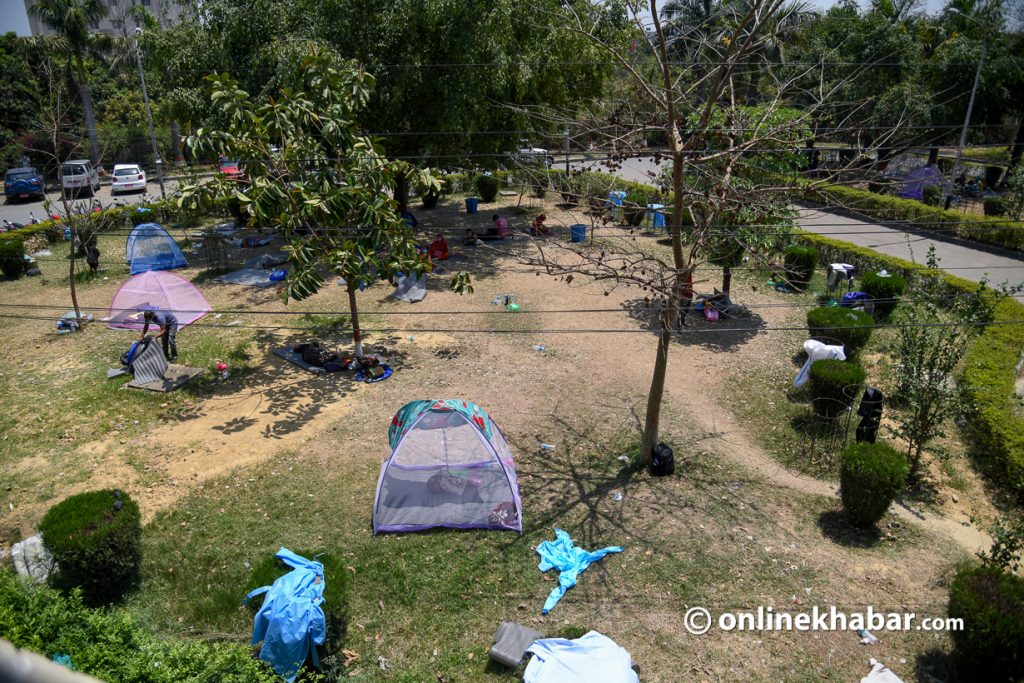
The number of cases in Nepalgunj has risen significantly since April 16, says Bheri Hospital focal person Dr Dinesh Shrestha. “The cases started to rise so fast, we just couldn’t cope. We had no infrastructure or human resources to cope with the rise in the number of cases.”
Shrestha says that as the Bheri Hospital has patients from the Safe Motherhood Programme, there is no way it can increase capacity for Covid-19 patients. He says the hospital can cater to 500 patients if the service is provided by any other hospital. But for that, he says, it needs support from the Ministry of Health and Population.
“Without government support, things will only get worse. They need to act and act fast,” says Dr Shrestha.



